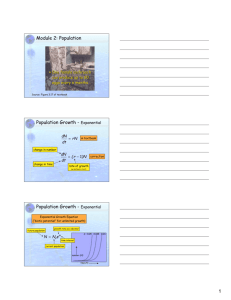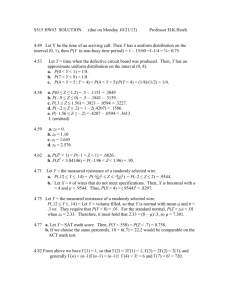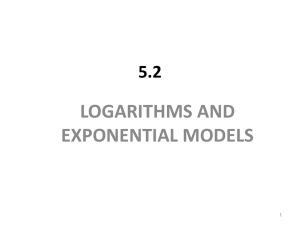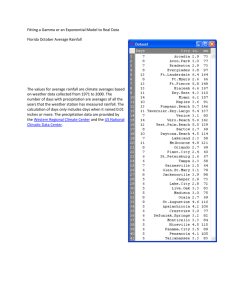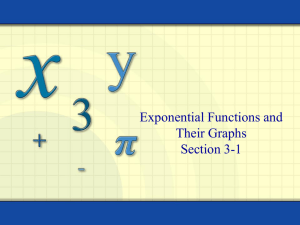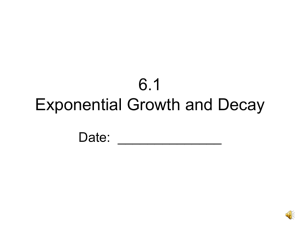Exponential functions and properties
advertisement
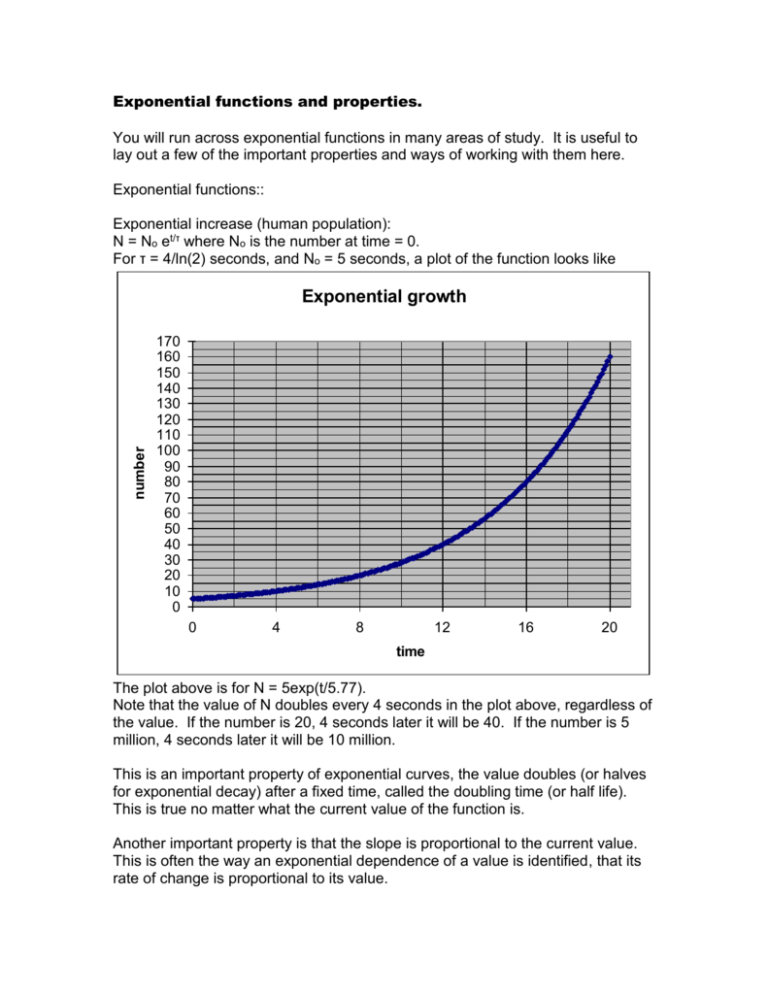
Exponential functions and properties. You will run across exponential functions in many areas of study. It is useful to lay out a few of the important properties and ways of working with them here. Exponential functions:: Exponential increase (human population): N = No et/τ where No is the number at time = 0. For τ = 4/ln(2) seconds, and No = 5 seconds, a plot of the function looks like number Exponential growth 170 160 150 140 130 120 110 100 90 80 70 60 50 40 30 20 10 0 0 4 8 12 16 20 time The plot above is for N = 5exp(t/5.77). Note that the value of N doubles every 4 seconds in the plot above, regardless of the value. If the number is 20, 4 seconds later it will be 40. If the number is 5 million, 4 seconds later it will be 10 million. This is an important property of exponential curves, the value doubles (or halves for exponential decay) after a fixed time, called the doubling time (or half life). This is true no matter what the current value of the function is. Another important property is that the slope is proportional to the current value. This is often the way an exponential dependence of a value is identified, that its rate of change is proportional to its value. The time constant in the expression above, 5.77 is equal to 4/ln(2) which gives double the number every 4 seconds: N = 4 = 2 exp(t/τ) 2 = exp(t/τ) ln(2) = ln[exp(t/τ)] = t/τ τ ln(2) = t τ = t/ln(2) where the t is the doubling time (N = 2xNo) To check, use the 4 second doubling time from above in the time constant: N = 4 = 2 exp(t/(4/ln(2))) 2 = exp(t/(4/ln(2))) ln(2)=ln[exp(t/(4/ln(2)))] = t/(4/ln(2)) ln(2)= t ln(2)/4 1 = t/4 t = 4 , as expected. Exponential decay: Suppose we have a particular isotope with a half life of 5 seconds. The equation for the number of nuclei at any time is then N = No e-t/(5/ln(2)) A plot of this with No = 106 looks like: Exponential growth number 1000000 500000 0 0 5 10 15 time 20 25





